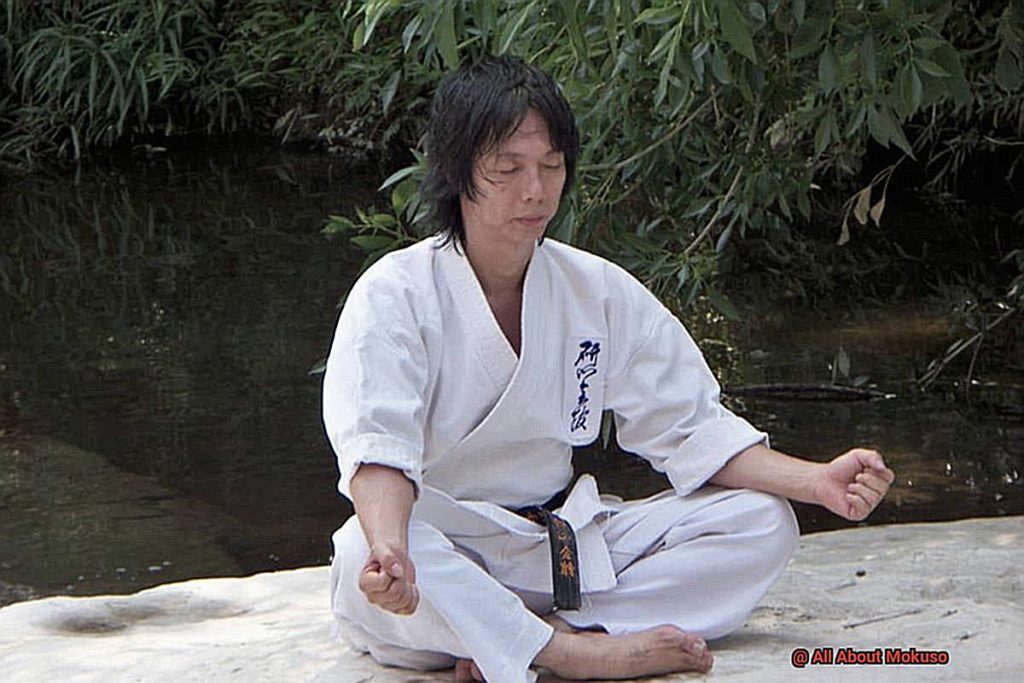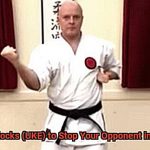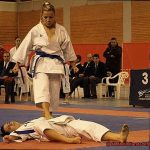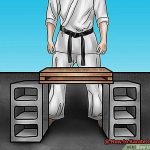Have you ever noticed the brief moment of silence at the beginning and end of a martial arts class?
That’s Mokuso, an essential practice in martial arts education. The Japanese word refers to “meditation” or “silent contemplation,” which helps students concentrate their minds and minimize distractions.
Even the most experienced practitioners maintain this practice because it helps develop mental discipline over time. But Mokuso is more than just a tool for concentration.
It also serves as a way to show appreciation to one’s instructor and fellow students. In this blog post, we’ll explore what Mokuso is, its place in martial arts, and how it should be carried out properly.
We’ll delve into the various interpretations of the art, its roots, and how it has evolved over time. Whether you’re a veteran martial artist or just starting your journey, this article will leave you with a newfound appreciation for Mokuso and its role in martial arts education.
So, let’s start now.
The Purpose of Mokuso
This practice is known as Mokuso and is an essential aspect of martial arts training. Mokuso has a singular purpose: to calm the mind, reduce stress and anxiety, and improve focus and concentration.
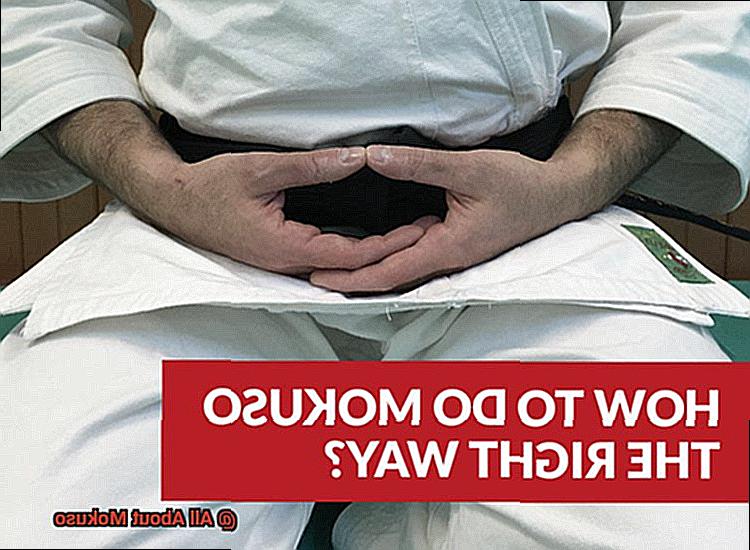
It is like taking a mental shower to wash away the dirt that accumulates throughout the day, allowing you to see with clarity. During Mokuso, practitioners sit in seiza, a traditional Japanese sitting position, close their eyes, focus on their breathing, and clear their minds of distractions.
The practice helps them become more aware of their surroundings and develop the ability to react quickly and efficiently to any situation. Beyond its mental benefits, Mokuso also has physical benefits.
Regularly practicing meditation can improve blood circulation, lower blood pressure, reduce muscle tension, and help with pain management. Mokuso is not just about achieving mental and physical discipline; it is also a form of Zen meditation that originated in Zen Buddhism.
Both monks and martial artists use meditation to improve their mental discipline. In Judo, Mokuso is particularly prominent before and after a match or tournament.
Competitors achieve a state of mental stability while still focusing on breathing and perform at their best.
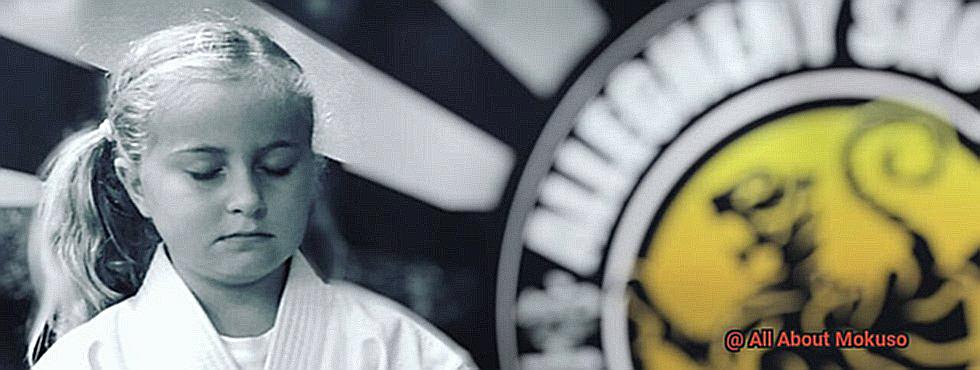
The Origin of Mokuso
Mokuso has its roots in Zen Buddhism, a belief system that emphasizes mindfulness and meditation.
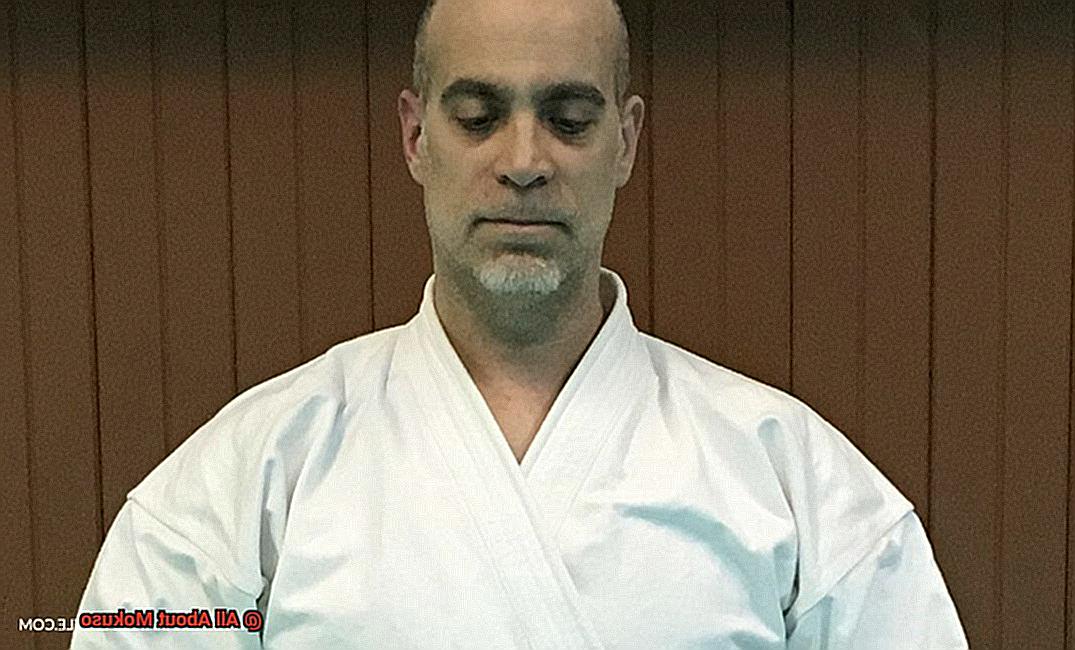
The word “mokuso” is a Japanese term that translates to “silent meditation,” and it is commonly used in martial arts such as karate and judo. The samurai, who integrated Zen Buddhism into their training, believed that meditation before and after their practice would help them develop mental focus, discipline, and calmness.
By clearing their minds of distractions and fears, they could be fully present in the moment and perform at their best. Over time, mokuso became an integral part of traditional Japanese martial arts.
It is typically performed at the beginning and end of each class or training session as a way to prepare the mind for practice and to reflect on what was learned during training. Today, mokuso continues to be an important aspect of many martial arts practices around the world.
But why is mokuso still relevant today? Its benefits are universal.
Practitioners can develop greater focus, discipline, and mental clarity both on and off the mat. In addition, mokuso can improve blood flow, muscle endurance, and pain relief.
Mokuso in Martial Arts
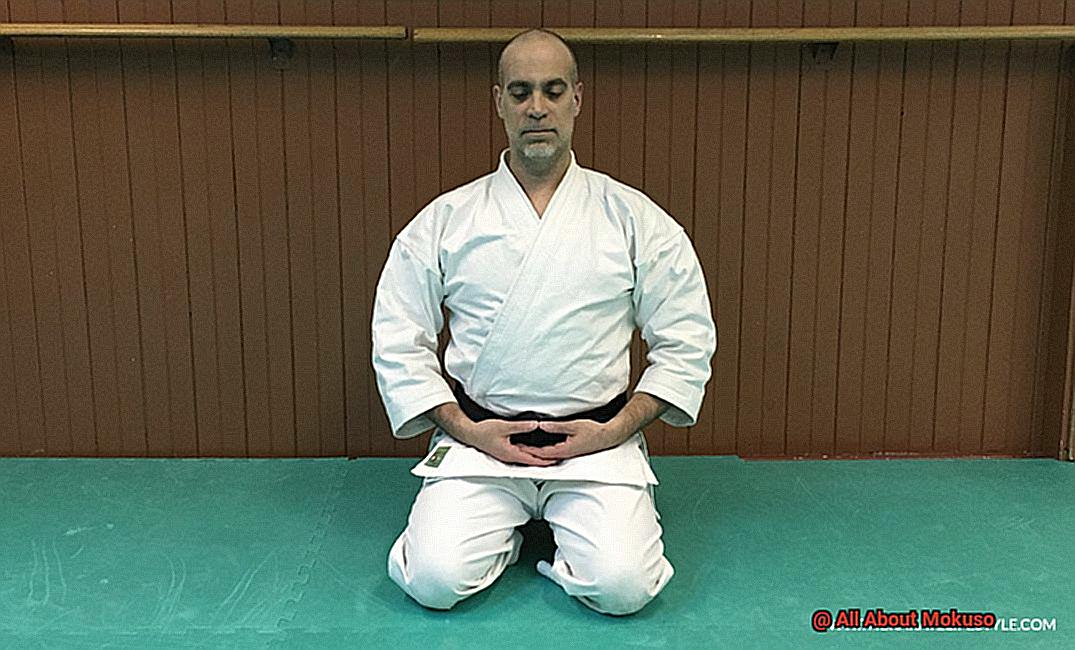
You’re probably familiar with the term “Mokuso.”
But what does it really mean, and why is it so important for your practice? Mokuso is a meditative technique that originated from Zen Buddhism and has been adopted by many martial arts schools.
It’s a way for practitioners to clear their minds, focus on their intentions, and prepare themselves mentally and physically for their training. During Mokuso, practitioners sit in a kneeling position with their eyes closed and hands resting on their thighs.
They concentrate on their breath and let go of any distractions or thoughts that may arise. The duration of the process can vary depending on individual preference, from just a few seconds to several minutes.
But why is Mokuso such an essential part of martial arts practice? For one, it helps foster a sense of calm and presence that can improve overall performance.
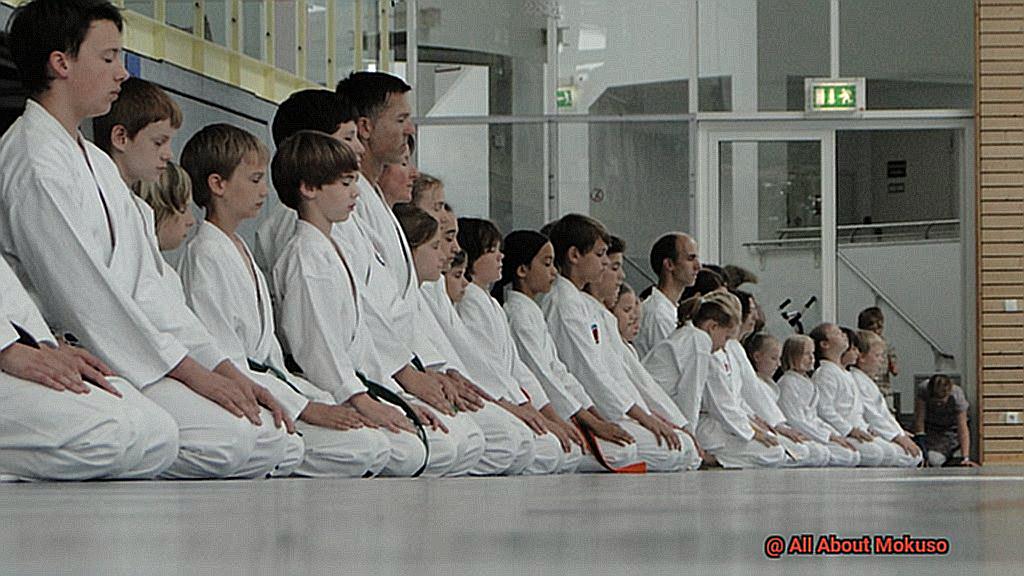
By eliminating distractions and focusing on the present moment, practitioners can react more quickly and effectively to any situation. Beyond that, Mokuso is also beneficial for creating a deeper connection between the mind and body.
By paying attention to their breath and avoiding external distractions, martial artists can become more aware of how their body feels and responds to different stimuli. This heightened awareness can translate into improved physical fitness both inside and outside the dojo.
In Judo, Mokuso is also practiced before and after training sessions, but it’s referred to as “Seiza,” or “correct sitting.” Practitioners sit in a kneeling position with their back straight and hands resting on their thighs, focusing on their breath while keeping their minds clear.
Incorporating this practice into your training routine can help you perform better both on and off the mat.
Mokuso in Judo
It’s an essential component of your training that can greatly improve your performance both on and off the mat.
Mokuso is a form of meditation that helps athletes clear their minds and focus on the present moment. During Mokuso in Judo, athletes sit in seiza – a traditional Japanese sitting position with their legs folded underneath them – and close their eyes.
By taking deep breaths and focusing on their breath, they can achieve a state of relaxation and calmness. But Mokuso isn’t just about relaxation.
Its origins can be traced back to Judo’s founder, Jigoro Kano, who believed that mental discipline was just as important as physical fitness in becoming a successful athlete. Kano incorporated elements of Zen Buddhism into his practice, and Mokuso is a reflection of this influence.
By regularly practicing Mokuso in Judo, athletes can improve their focus and technique while also developing mental clarity, reducing stress and anxiety, and increasing self-awareness. Learning to control their thoughts and emotions through Mokuso can have a positive impact on their daily lives outside of Judo.
How to Perform Mokuso
Mokuso allows practitioners to clear their minds and center themselves, enabling them to become more aware of their surroundings and their own bodies.
To perform Mokuso correctly, start by sitting in seiza, a formal Japanese sitting position with your back straight and hands resting on your lap. Close your eyes gently and focus on your breathing, taking deep breaths through your nose and exhaling slowly through your mouth. During the meditation, let go of any distracting thoughts or concerns and maintain a calm and relaxed state.
Mokuso has numerous health benefits, including improved concentration, focus, self-discipline, and relaxation. Practicing Mokuso before and after each training session can help you prepare mentally for practice and reflect on your progress. It’s also a way to show respect for your instructor and fellow students.
In Judo specifically, Mokuso is used before matches to calm nerves and concentrate on the task at hand. It’s also used in kata to improve form and timing. By incorporating Mokuso into your training regimen, you can deepen your understanding of the art and achieve greater levels of skill and mastery.
Mokuso has its roots in Zen Buddhism, which emphasizes mindfulness and being present in the moment. By practicing Mokuso regularly, martial arts students can connect with this tradition and gain a deeper appreciation for the art.
So, Mokuso is an essential part of martial arts training that should not be overlooked or taken lightly.
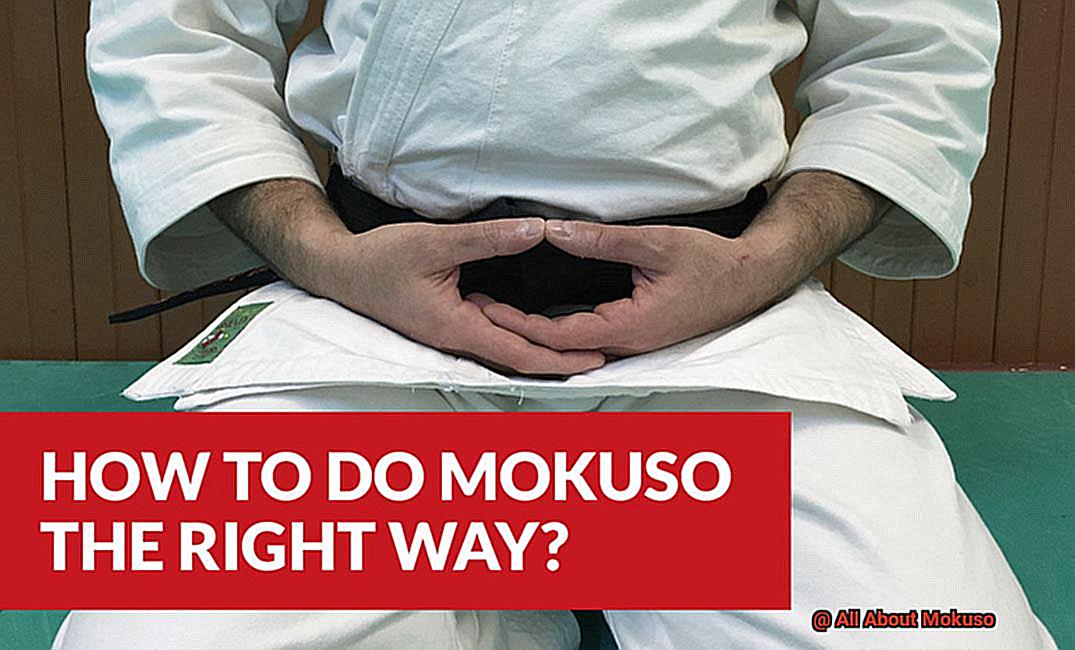
Benefits of Practicing Mokuso
Mokuso can help you achieve a strong mind-body connection and improve your physical and mental well-being.
One of the primary benefits of practicing Mokuso is its ability to calm the mind. By sitting in silence and focusing on one’s breath, practitioners can clear their minds of any distractions and attain a sense of inner peace.
This state of mind is crucial in martial arts as it helps practitioners stay focused on their training and develop a strong mind-body connection. But the benefits don’t stop there.
Mokuso also helps improve breathing by incorporating deep breathing exercises. This can increase lung capacity, which is incredibly useful during intense martial arts training or competition.
Deep breathing also promotes relaxation and can help reduce stress levels for an overall improved sense of well-being. Furthermore, Mokuso can help improve posture by encouraging practitioners to sit straight with a relaxed but upright position.
This helps strengthen core muscles and improve overall body alignment, leading to better balance and stability during martial arts training. Finally, practicing Mokuso can enhance focus and concentration.
By sitting still and focusing on one’s breath or a specific object, practitioners learn to block out distractions and focus solely on the task at hand. This skill is vital in martial arts as it helps practitioners stay present in the moment and react quickly to their opponent’s movements.
azyFtWXWJaA” >
Conclusion
In conclusion, Mokuso is not just a simple meditation exercise; it’s an essential part of martial arts education with roots in Zen Buddhism.
This method helps practitioners clear their minds, improve focus and concentration, and develop mental discipline. It also serves as a way to express gratitude to one’s instructor and fellow students.
But the benefits of Mokuso go beyond mental and physical fitness. Regular practice can lead to improved concentration, self-discipline, relaxation, better breathing techniques, enhanced posture, and a stronger mind-body connection.
Before each training session or tournament, martial artists use Mokuso to prepare themselves mentally and physically for the task ahead. Judo athletes use Mokuso before matches to calm their nerves and focus on their performance.
In kata competitions, it helps improve form and timing. Incorporating this exercise into your training routine will deepen your knowledge of the art and help you achieve greater levels of proficiency.

